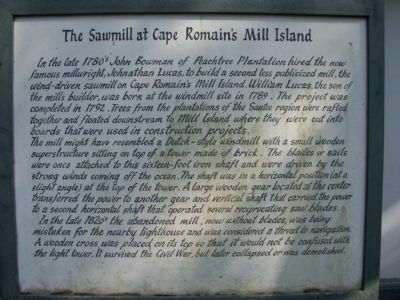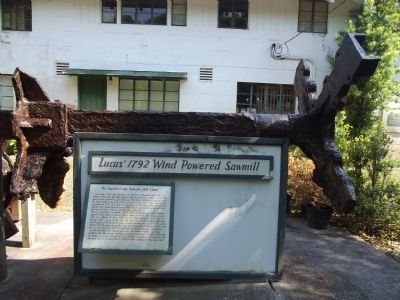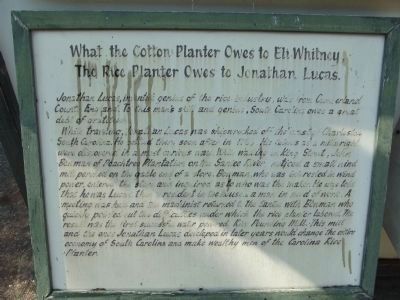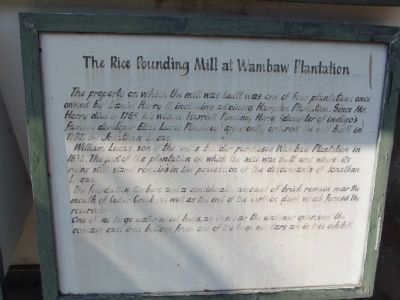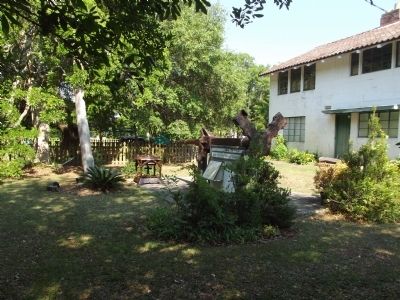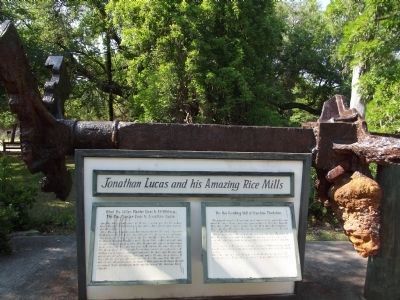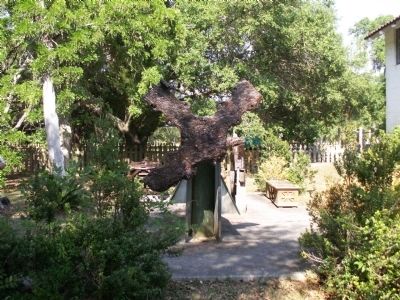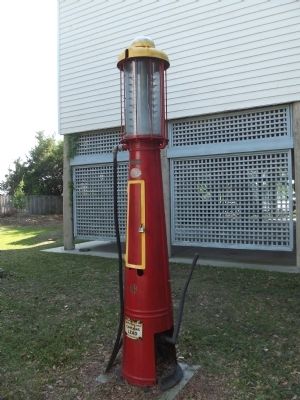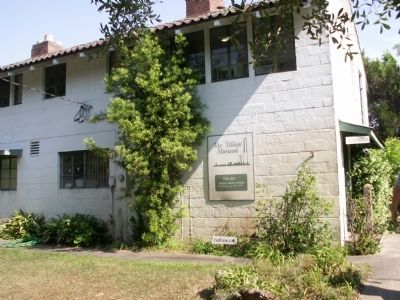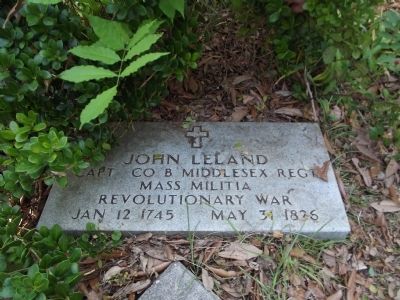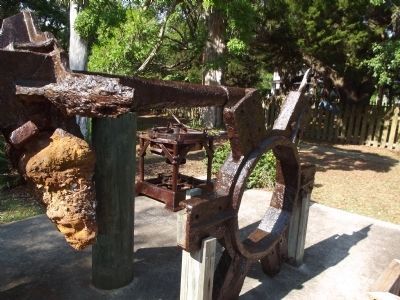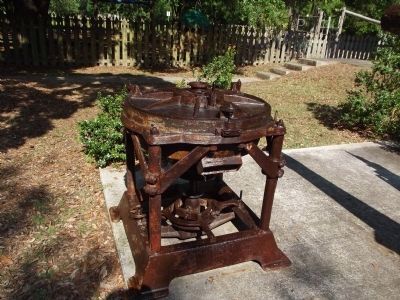McClellanville in Charleston County, South Carolina — The American South (South Atlantic)
Lucasí 1792 Wind Powered Sawmill
Jonathan Lucas and his Amazing Rice Mills
The Sawmill at Cape Romainís Mill Island
In the late 1780ís John Bowman of Peachtree Plantation hired the now famous millwright, Johnathan Lucas, to build a second less publicized mill, the wind~driven sawmill on Cape Romainís Mill Island. William Lucas, the son of the mills builder, was born at the windmill site in 1789. The project was completed in 1792. Trees from the plantations of the Santee region were rafted together and floated downstream to Mill Island where they were cut into boards that were used in construction projects.
The mill might have resembled a Dutch ~ style windmill with a small wooden superstructure sitting on top of a tower made of brick. The blades or sails were once attached to this sixteen - foot iron shaft and were driven by the strong winds coming off the ocean. The shaft was in a horizontal position (at a slight angle) at the top of the tower. A large wooden gear located at the center transferred the power to another gear and vertical shaft that carried the power to a second horizontal shaft that operated several reciprocating saw blades.
In the late 1820ís the abandoned mill, now without blades, was being mistaken for the nearby lighthouse and was considered a threat to navigation. A wooden cross was placed on itís top so that it would not be confused with the light tower. It survived the Civil War, but later collapsed or was demolished.
(Back):
What the Cotton Planter Owes to Eli Whitney, the Rice Planter Owes to Jonathan Lucas.
Jonathan Lucas, invention genius of the rice industry, was from Cumberland County, England. To this manís skill and genius, South Carolina owes a great debt of gratitude..
While traveling, Jonathan Lucas was shipwrecked off the coast of Charleston, South Carolina. He settled there soon after in 1783. His talents as a millwright were discovered in a most curious way. While walking on King Street, John Bowman of Peachtree Plantation on the Santee River, noticed a small wind mill perched on the gable end of a store. Bowman, who was interested in wind power, entered the store and inquired as to hwo was the maker. He was told that he was Lucas, then a resident in the house, a man in need of work. A meeting was held and the machinist returned to the Santee with Bowman who quietly pointed out the difficulties under which the rice planter labored. The result was the first successful water powered Rice Pounding Mill. This mill and the ones Jonathan Lucas developed in later years would change the entire economy of South Carolina and make wealthy men of the Carolina Rice Planter.
The Rice Pounding Mill at Wambaw Plantation
The property on which the mill was built was one of four plantations once owned by Daniel Horry II including adjoining Hampton Plantation. Since Mr. Horry died in 1785, his widow Harriett Pinckney Horry, (daughter of indigoís famous developer Eliza Lucas Pinckney) apparently ordered the mill built in 1792 by Jonathan Lucas.
William Lucas, son of the millís builder, purchased Wambaw Plantation in 1832. The part of the plantation on which the mill was built and where itís ruins still stand remains in the possession of the descendants of Jonathan Lucas.
The foundation timbers and a considerable amount of brick remain near the mouth of Cedar Creek, as well as the end of the earthen dam which formed the reservoir.
One of the large wheel hubs, an iron bar, the wallower gear, and the concave cast iron bottom from one of the huge mortars are in this exhibit.
Topics. This historical marker is listed in this topic list: Industry & Commerce. A significant historical year for this entry is 1789.
Location. 33° 4.857′ N, 79° 27.533′ W. Marker is in McClellanville, South Carolina, in Charleston County. Marker can be reached from Pinckney Street. Touch for map. Marker is in this post office area: Mc Clellanville SC 29458, United States of America. Touch for directions.
Other nearby markers. At least 8 other markers are within 7 miles of this marker, measured as the crow flies. The Lowcountry Seamanís Memorial (about 300 feet away, measured in a direct line); Archibald Rutledge Birthplace (about 600 feet away); Point Plantation
(approx. 0.2 miles away); McClellanville (approx. 0.3 miles away); Deerhead Oak (approx. 0.3 miles away); Richard Tillia Morrison (approx. 0.4 miles away); St. James Santee Parish Veterans Memorial (approx. 0.4 miles away); St. James Santee Parish Church (approx. 6.3 miles away). Touch for a list and map of all markers in McClellanville.
More about this marker. The marker is on the grounds of the Village Museum in McClellanville
Credits. This page was last revised on June 16, 2016. It was originally submitted on May 4, 2012, by Anna Inbody of Columbia, South Carolina. This page has been viewed 1,869 times since then and 47 times this year. Photos: 1, 2, 3, 4, 5, 6, 7, 8, 9, 10, 11, 12. submitted on May 4, 2012, by Anna Inbody of Columbia, South Carolina. • Craig Swain was the editor who published this page.
